
Here’s the full edition of our full-colour 74-page February edition of Tudor Life Magazine. The theme this month is “16th Century Europe”.
[Read More...]
Here’s the full edition of our full-colour 74-page February edition of Tudor Life Magazine. The theme this month is “16th Century Europe”.
[Read More...]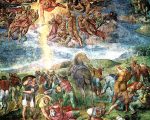
This feast day celebrates the conversion of St Paul (formerly Saul) on the road to Damascus. The story of the conversion of Saul, a man known for his persecution of Christians, is found in the Bible in Acts 9:
“And Saul, yet breathing out threatenings and slaughter against the disciples of the Lord, went unto the high priest, And desired of him letters to Damascus to the synagogues, that if he found any of this way, whether they were men or women, he might bring them bound unto Jerusalem. And as he journeyed, he came near Damascus: and suddenly there shined round about him a light from heaven: And he fell to the earth, and heard a voice saying unto him, Saul, Saul, why persecutest thou me? And he said, Who art thou, Lord? And the Lord said, I am Jesus whom thou persecutest: it is hard for thee to kick against the pricks. And he trembling and astonished said, Lord, what wilt thou have me to do? And the Lord said unto him, Arise, and go into the city, and it shall be told thee what thou must do. And the men which journeyed with him stood speechless, hearing a voice, but seeing no man.
[Read More...]
On this day in history, 9th January…
1514 – Anne of Brittany, wife of Louis XII of France, died at the Chateau of Blois. She was buried in the Cathedral Basilica of Saint Denis.
1522 – Adriaan Florenszoon Boeyens was elected as Pope, becoming Pope Adrian VI.
1554 – Birth of Pope Gregory XV, born as Alessandro Ludovisi, in Bologna, Italy.
1539 – Executions of Henry Pole, 1st Baron Montagu, and Henry Courtenay, Marquis of Exeter, on Tower Hill. They were found guilty of high treason in December 1538 for denying the King’s supremacy, desiring the King’s death and favouring and promoting Cardinal Reginald Pole, Montagu’s brother, “in his traitorous proceedings”.


On this day in history…
2 January:
1492 – King Boabdil surrendered Granada to the forces of King Ferdinand II of Aragon and Queen Isabella I of Castile – click here to read more.
1525 – Death of Sir William Uvedale. Uvedale had been created a Knight of the Bath and Knight of the Royal Body by Henry VII, and served Arthur, Prince of Wales, as his counsellor.
1536 – Eustace Chapuys, the Imperial Ambassador, arrived at the dying Catherine of Aragon’s bedside in Kimbolton Castle.
1539 – Geoffrey Pole, son of Sir Richard Pole and Margaret Pole, Countess of Salisbury, was pardoned after attempting suicide for the third time.
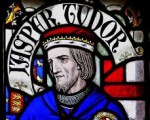
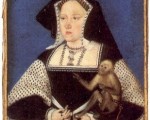
As today is the anniversary of the birth of Catherine of Aragon on 16th December 1485, I thought I would share with you some book recommendations and resources for finding out more about Catherine.
[Read More...]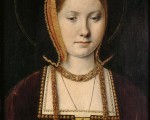
12 December:
1546 – Henry Howard, Earl of Surrey was led through the streets of London from Ely Place, where he had been held since the 2nd December, to the Tower of London. There, he was joined by his father, Thomas Howard, 3rd Duke of Norfolk, who was taken to the Tower by barge along the Thames.
1574 – Birth of Anne of Denmark, Queen of England, Scotland, and Ireland as consort of James I, at Skanderborg Castle, Jutland, Denmark. Anne was the second daughter of Frederick II, King of Denmark and Norway, and his wife, Sophia. She married James I, when he was James VI of Scotland, by proxy on 20th August 1589, and in a proper church ceremony on 23rd November 1589. The couple’s children included the future Charles I and Elizabeth Stuart, Queen of Bohemia. Anne died on 2nd March 1619 of consumption and dropsy, and was buried in Henry VII’s Chapel, Westminster Abbey.
1595 – Death of Sir Roger Williams, Protestant Welsh soldier and author, from a fever with his patron, Robert Devereux, Earl of Essex, at his side. He was buried at St Paul’s Cathedral. William served as a soldier in the Low Countries and France, and was second in command to Essex of the cavalry gathered at Tilbury in 1588. He wrote the 1590 “A Briefe Discourse of Warre”.

Historian and Tudor Life Magazine editor Gareth Russell will be joining us in the chatroom for a live chat at 11pm UK time on Friday 16th December.
[Read More...]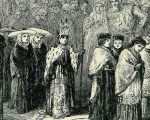
The 6th December was and is the feast of St Nicholas, or St Nicholas of Myra, the 4th century Bishop of Myra (modern-day Demre in Turkey), who is the patron saint of children, as well as sailors, merchants, archers, repentant thieves, brewers, pawnbrokers and students. In medieval and Tudor times, it was traditional for a choirboy to be chosen on 6th December or Childermas (Holy Innocents’ Day) as “Boy Bishop” to act as bishop and to lead processions around communities, collecting money for the church and parish funds, and to lead some religious services.
[Read More...]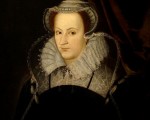
5th December:
1556 – Birth of Anne de Vere (née Cecil), Countess of Oxford, daughter of William Cecil, 1st Baron Burghley, and his second wife, Mildred (née Cooke), and wife of Edward de Vere, 17th Earl of Oxford. The marriage was not the happiest of matches, with de Vere refusing to acknowledge their daughter Elizabeth as his. The couple were eventually reconciled.
1558 – Death of Gabriel Dunne (Donne), Abbot of Buckfast and ‘keeper of the spiritualities’, in the diocese of London. He was buried at St Paul’s, before the high altar.
1560 – Death of King Francis II of France and King Consort of Scotland as husband of Mary, Queen of Scots. Francis was aged just fifteen when he died from some type of ear infection. He was succeeded as King of France by his brother, Charles, who became Charles IX. Francis was buried at the Cathedral Basilica of Saint-Denis on 23rd December.
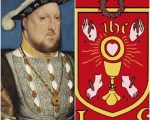
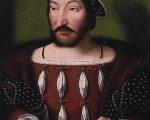
This is Part II of a four-part series, which seeks to look at what were considered the attributes of a Renaissance prince, and who of our four princes embodied the ideals of the Renaissance best. What were some of those themes? The idea of a Renaissance man stood for a person who strove to embrace knowledge and develop himself. This included concepts such as the arts, knowledge, physical achievements, and social ideals. More plainly and for a prince, this could include cultivating a court known for patronizing artists, musicians, and the like; establishing educational institutions, a good degree of physical fortitude, and things such as chivalric love or engaging in acts of charity.
[Read More...]
Merry Christmas! Here’s the December Tudor Life Magazine, an 80-page magazine packed with facts, fun and festivity. There’s a full 20-page feature on Tudor portraits, and there’s even a “Cut out Elizabeth I” fun activity! Enjoy this month’s magazine.
[Read More...]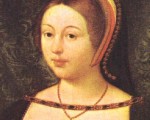
28 November:
1489 – Birth of Margaret Tudor, Queen of Scotland and consort of James IV, at Westminster Palace. Margaret was the eldest daughter of Henry VII and his wife, Elizabeth of York, and the sister of Henry VII. She spent her childhood at Sheen and at Eltham Palace, but was sent to Scotland at the age of thirteen to marry James IV.
1499 – Execution of Edward Plantagenet, styled Earl of Warwick, on Tower Hill. Edward was the son of George, Duke of Clarence, brother of Edward IV and Richard III, and so was a potential claimant to the throne. He was imprisoned in the Tower of London after Henry VII’s accession, and was executed for treason after the pretender Perkin Warbeck had allegedly plotted to free himself and Edward. He was buried at Bisham Abbey.
1557 – Death of Sir Robert Rochester, administrator. He was buried at the Charterhouse at Sheen. Rochester served Mary I as Comptroller of the Royal Household, Privy Councillor, Chancellor of the Duchy of Lancaster, Keeper of the Privy Seal and a member of Parliament.
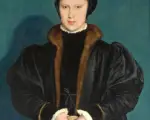
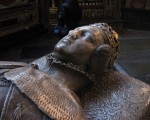
On this day in history events for 21-27th November.
21 November:
1495 – Birth of John Bale, churchman, Protestant playwright, historian and Bishop of Ossory, at Cove, near Dunwich, in Suffolk. Bale wrote twenty-four plays, including “Three Laws of Nature, Moses and Christ, corrupted by the Sodomytes, Pharisees and Papystes most wicked”, “A Tragedye; or enterlude manifesting the chief promyses of God unto Man”, “The Temptacyon of our Lorde”, “A brefe Comedy or Enterlude of Johan Baptystes preachynge in the Wyldernesse, etc” and “ Kynge Johan”. His most famous work is his Illustrium majoris Britanniae scriptorum, hoc est, Angliae, Cambriae, ac Scotiae Summarium… (“A Summary of the Famous Writers of Great Britain, that is, of England, Wales and Scotland”), which was his effort to record every work by a British author.
1558 – Death of James Bassett, courtier and stepson of Arthur Plantagenet, Viscount Lisle. Bassett was a member of Philip of Spain’s Privy Chamber and private Secretary to Mary I. He was buried at Blackfriars, London.
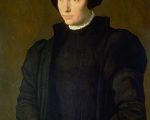
Thank you to our regular contributor, Heather R. Darsie, for introducing us to this interesting 16th century woman.
Dorothea Oldenburg, Princess of Denmark and Norway,1 was born to King Christian II of Denmark and Norway, and Isabella of Austria on 10 November 1520. Isabella of Austria was younger sister to Charles V, Holy Roman Emperor, and a niece of Katherine of Aragon. Dorothea was a niece of Charles V.
Dorothea’s father, Christian II, was forced to abdicate his throne on 20 January 1523. Thereafter, Dorothea and her family, including her better-known little sister Christina of Denmark, fled to the Netherlands. Three-year-old Dorothea’s great-aunt, Margaret of Austria, was serving as Regent of the Netherlands; Margaret served in this capacity from 1507 to 1515, and again from 1519 until 1530. Margaret was pro-English.
[Read More...]
This is Part I of a four-part series by Heather R. Darsie, which seeks to look at what were considered the attributes of a Renaissance prince, and who of our four princes embodied the ideals of the Renaissance best.
What were some of those themes?
The idea of a Renaissance man stood for a person who strove to embrace knowledge and develop himself. This included concepts such as the arts, knowledge, physical achievements, and social ideals. More plainly and for a prince, this could include cultivating a court known for patronising artists, musicians, and the like; establishing educational institutions, a good degree of physical fortitude, and things such as chivalric love or engaging in acts of charity.
[Read More...]
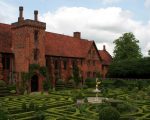

On this day in history events for week 17th to 23rd October.
17th October:
1560 – Baptism of Walter Marsh, spy and Protestant martyr, at St Stephen’s Church, Coleman Street, London. Marsh was burned to death in Rome’s Campo dei Fiori after having his tongue and hands cut off. He had been accused of being paid by Elizabeth I to spy on Catholics and showing contempt for the Eucharist.
1586 – The poet, courtier and soldier Sir Philip Sidney died as a result of an injury inflicted by the Spanish forces at the Battle of Zutphen in the Netherlands. His body was returned to England and laid to rest on the 16th February 1587 in St Paul’s Cathedral.
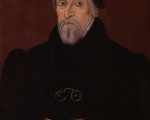
On this day in history events for week beginning 10th October…
10th October:
1505 (10th or 11th) – Death of William Barons (Barnes), Bishop of London and former Master of the Rolls. He was buried at St Paul’s Cathedral.
1530 – Death of Thomas Grey, 2nd Marquis of Dorset, magnate, soldier and courtier. He was buried at Astley Collegiate Church in Warwickshire. Grey’s offices included Constable of Warwick Castle and of Kenilworth Castle, and he also acted as Chief Answerer at the marriage of Prince Arthur and Catherine of Aragon. Grey was also the grandfather of Lady Jane Grey.
1549 – Edward Seymour, Duke of Somerset and Lord Protector, was ordered to leave Windsor Castle and to give himself up. He had moved there with the young Edward VI on the 6th October, from Hampton Court Palace, after learning that his protectorship was in danger.
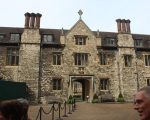
In this week’s Claire Chat’s video I talk about my recent visit to London Charterhouse and the history of the site. I hope you enjoy the talk and the photos.
[Read More...]